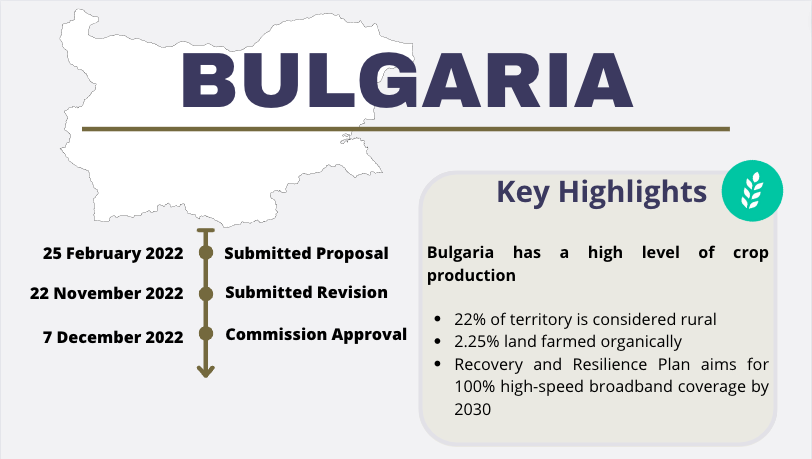CAP Strategic Plans
In December 2022, the European Commission completed the approval of the Common Agricultural Policy (CAP) Strategic Plans for all 27 Member States. These plans are a crucial aspect of the new CAP, as they will put into action the budgets and regulations adopted by legislators. Although they are based on the same set of rules, they are tailored to the unique needs of each country and aim to address their specificities.
To aid in understanding the impact of these plans, our team has created a series of fact sheets that provide insight into the national particularities and implications of the CAP. These fact sheets will be an essential resource for stakeholders, policymakers, and those interested in the new CAP.
Austria
The plan drafted by Austria is marked by the two key features of its agricultural model: small holdings and geographical constraints.
View the plan in detail here.
Belgium (Flanders)
The only country to present two plans, one for each administration of the federal state. We are first looking at Flanders.
View the plan in detail here.
Belgium (Wallonia)
The second plan set out by Belgium aims to improve the overall resilience and long-term sustainability of its sector.
View the plan in detail here.Bulgaria
First Eastern European Member State in our list bearing an important crop farming sector. Rural development plays an important role in this plan.
View the plan in detail here.
Croatia
Croatia, the latest Member of the Union, drew up its new plan to support its agricultural sector renowned for its small family holdings.
View the plan in detail here.
Cyprus
Cyprus' plan will aim to support the production of its geographically protected halloumi cheese as well as to boost employment in rural areas.
View the plan in detail here.
Czechia
The plan presented by Czechia is adapted to its high level of crop production and important forested areas.
View the plan in detail here.
Denmark
Denmark is the first Member State in our series to tackle the redistribution of farmers' incomes without reserving direct payments for this cause.
View the plan in detail here.
Estonia
Estonia's plans aim to mitigate climate impact on its crop yields and farmer's revenues. This notably results in a focus on greening practices.
View the plan in detail here.
Finland
Forestry takes up an important part of Finland's CAP strategic plans, which are also accounting for significant geographical constraints.
View the plan in detail here.
France
Historically one of the largest beneficiaries of the CAP, France structured its plans to account for a diversified agricultural landscape. The modernisation and sustainability of rural areas are high priorities for France.
View the plan in detail here.
Germany
One of the largest CAP budgets will support the roll-out of Germany's strategic plans. These cover a broad range of issues, including sustainable practices, the ageing farming population and the development of training programmes.
View the plan in detail here.
Greece
The sustainable development of Greece's agriculture is a key aspect of its strategic plans. These also have to account for the high proportion of land that faces constraints.
View the plan in detail here.
Hungary
Hungary seeks to improve the distribution of funds supporting a very diverse agricultural sector.
View the plan in detail here.
Ireland
Ireland is one of the most rural European member states and has drawn up its plans accordingly to support its livestock and dairy sectors and high sustainability ambitions.
View the plan in detail here.
Italy
The Union's member state with the most significant amount of geographically protected products unsurprisingly set up ambitious plans. These account for the constraints a large proportion of Italy's rural areas face.
View the plan in detail here.
Latvia
The plans prepared by the Baltic state include an important focus on sustainability, that account for the large proportion of forested lands.
View the plan in detail here.
Lithuania
This baltic state ranks as one of the most rural member states. Its plans include an important focus on the development of sustainable farming methods.
View the plan in detail here.
Luxembourg
The Union's second-smallest member state aims at developing sustainable practices in its agricultural sector.
View the plan in detail here.
Malta
The Union's smallest member state had to draft its plans according to significant geographical constraints and the fragmented structure of its agriculture.
View the plan in detail here.
Netherlands
Ireland is one of the most rural European member states and has drawn up its plans accordingly to support its livestock and dairy sectors and high sustainability ambitions.
View the plan in detail here.
Poland
Poland drew up plans to support the development of sustainable practices in the agricultural sector. Energy also takes up an important spot in these plans.
View the plan in detail here.
Portugal
Portugal sought to balance its plans to promote diversity, support the development of sustainable farming and preserve traditional practices.
View the plan in detail here.
Romania
Romania's plans seek to support its important agricultural sectors and further increase the number of farms. Sustainability also takes a big focus in the plans with special attention to water and soil protection.
View the plan in detail here.
Slovakia
Slovakia had to draw up its plans in accordance with the important natural constraints it is facing.
View the plan in detail here.
Slovenia
The Slovenian plans account for its fragmented farm structure. It's also one of the rare member states to include a specific focus on the beekeeping and honey sector.
View the plan in detail here.
Spain
The Spanish CAP plans include an important focus on non-agricultural projects, including by financing energy efficiency projects or smart villages.
View the plan in detail here.
Sweden
The Swedish plans are addressing the important constraints imposed by the Nordic climate.
View the plan in detail here.
All country factsheets are now available on this page. Do not miss out on future OPP content related to agri-food and rural developments by following our policy newsletter, Spotlight.




























